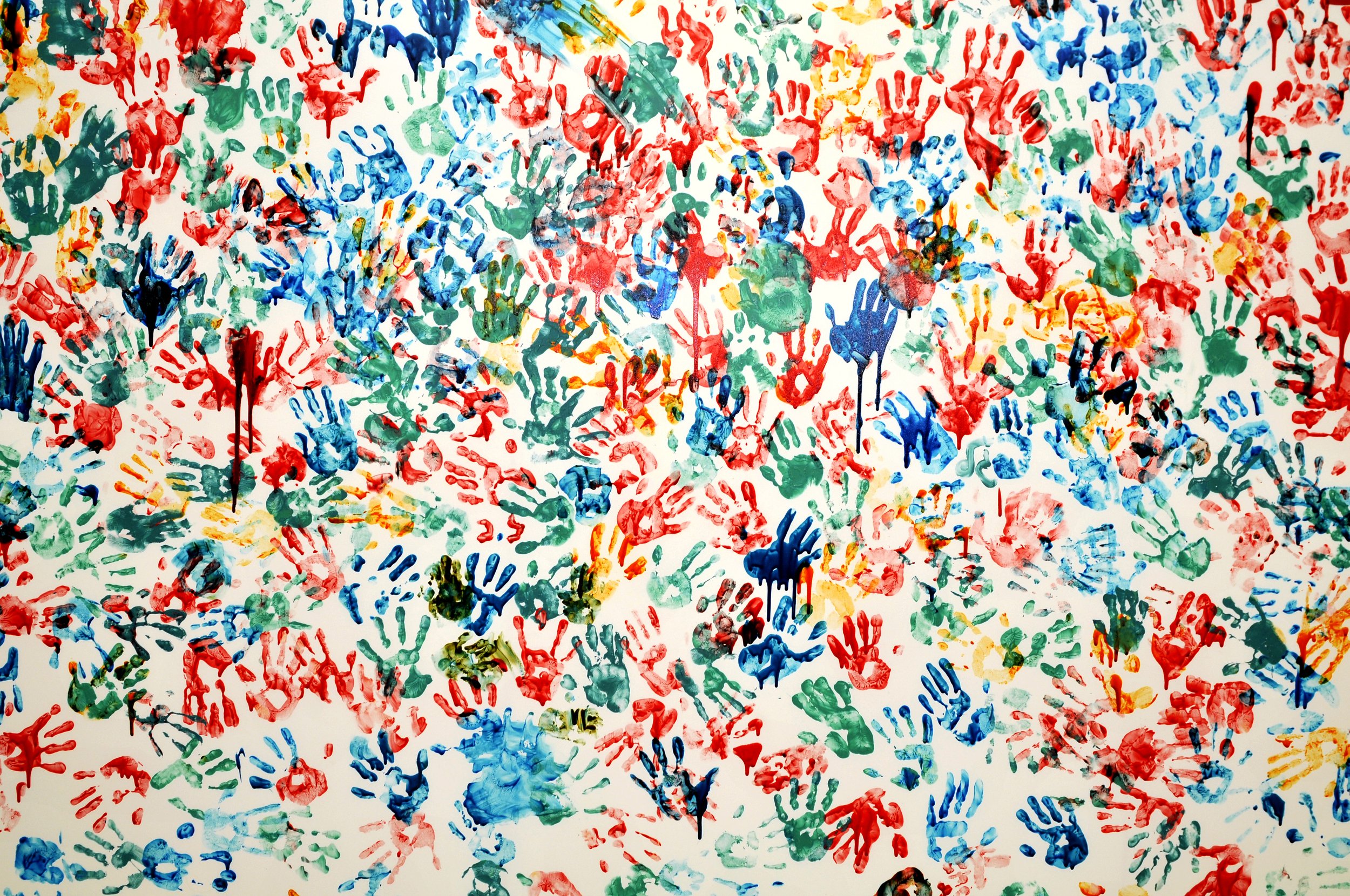
Abstract Handprint Painting Activity
We're excited to introduce you to a fun and interactive art activity that you and your child can enjoy together at home: Creating a Large Abstract Experimental Painting Using Handprints! This project encourages creativity, exploration, and collaboration, as you and your child work together to create a unique masterpiece.
Activity Overview:
Objective: To create a large abstract painting using paints and handprints, allowing for experimentation and self-expression.
Materials Needed:
Large canvas or sturdy paper
Paints (acrylic or poster paint) in various colors
Paintbrushes
Water cups
Paper towels or cloth for cleaning hands and brushes
Duration: Flexible, depending on the size of the painting and the child's pace.
Instructions:
1. Introduction to Abstract Painting:
Begin by introducing your child to the concept of abstract painting. Explain that abstract art does not attempt to represent reality accurately but instead focuses on shapes, colors, lines, and textures to evoke emotions and stimulate the imagination.
Discuss how abstract artists often use experimentation and spontaneity in their work, allowing for creative expression without strict rules or guidelines.
2. Prepare the Workspace:
Clear a large area for your painting activity, ensuring that there is enough space for the canvas and for movement around it.
Cover the floor or work surface with newspaper or a plastic tablecloth to protect it from paint spills.
3. Painting Process:
Start by choosing a variety of paint colors and pouring them into separate containers.
Invite your child to dip their hands into the paint and make handprints on the canvas. Encourage them to experiment with different colors, hand positions, and movements to create interesting patterns and textures.
As you and your child add handprints to the canvas, observe how the colors blend and interact with each other, creating a dynamic and layered composition.
Encourage creativity and spontaneity, allowing your child to explore different techniques and experiment with mixing colors directly on the canvas.
4. Add Additional Elements (Optional):
Once the canvas is covered with handprints, you can further enhance the painting by adding additional elements such as brushstrokes, splatters, or stenciled designs.
Encourage your child to use paintbrushes or other tools to add texture and detail to the artwork, adding depth and visual interest.
5. Reflect and Discuss:
After completing the painting, take some time to reflect on the experience with your child. Discuss the process of creating abstract art and how it differs from representational art.
Ask your child how they feel about the finished painting and what emotions or ideas it evokes for them. Encourage them to share their thoughts and interpretations.
Background Information on Abstract Painting:
Abstract painting is a form of art that does not attempt to depict objects or scenes from the visible world in a realistic manner. Instead, abstract artists use colors, shapes, lines, and textures to create compositions that are non-representational and open to interpretation. Abstract painting allows for greater freedom of expression and encourages viewers to engage with the artwork on a more emotional and intuitive level. Some famous abstract artists include Wassily Kandinsky, Piet Mondrian, Jackson Pollock, and Mark Rothko.
Tips for Success:
Encourage experimentation and spontaneity in your painting process, allowing for creative exploration and discovery.
Emphasize the importance of collaboration and teamwork, as you and your child work together to create the painting.
Display the finished artwork proudly, celebrating the creativity and collaboration that went into its creation.
We hope you and your child enjoy this abstract handprint painting activity! It's a wonderful opportunity to bond with your child while exploring the exciting world of abstract art.
Happy painting!
